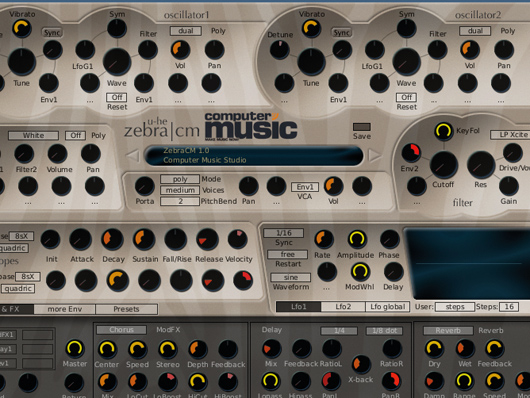How to make a Deadmau5 Faxing Berlin-style synth sound

Getting started
Step 1: To get the kind of progressive house sounds used in Faxing Berlin and other Deadmau5 tracks, you’ll need a virtual analogue synth. We’re using ZebraCM, which you’ll find on the Computer Music magazine cover CVD every month, but these techniques can be applied to other instruments, too. We’re going to start with the Initial patch – while it might not sound like much at the moment, with a few tweaks we can easily get that authentic prog vibe.

Detuning and filtering
Step 3: Set the Detune knob of Oscillator 1 to -20 and Oscillator 2 to +20. This already gives us a richer tone, but it sounds more like Van Halen’s Jump than anything else. We need some filter action to give the sound some shape, so start by turning the Env2 knob in the Filter panel down to 92.

Tuning
Step 8: Turn the Tune setting of the second oscillator up to 7 semitones. Adding this perfect fifth interval gives the patch a warmer, fuller sound, but if you find that it’s not to your taste, try tuning the second oscillator up a full octave instead (12 semitones). This produces a more up-front, trance-like tone.

Opening up the filter
Step 9: The Faxing Berlin sound evolves throughout the song: it starts very dark and gradually the filter opens up. If you want to create the same effect, turn the Key Fol knob in the Filter section down to zero, set the Cutoff to about 32, and use the Env2 parameter to control the filter.
Computer Music magazine is the world’s best selling publication dedicated solely to making great music with your Mac or PC computer. Each issue it brings its lucky readers the best in cutting-edge tutorials, need-to-know, expert software reviews and even all the tools you actually need to make great music today, courtesy of our legendary CM Plugin Suite.





